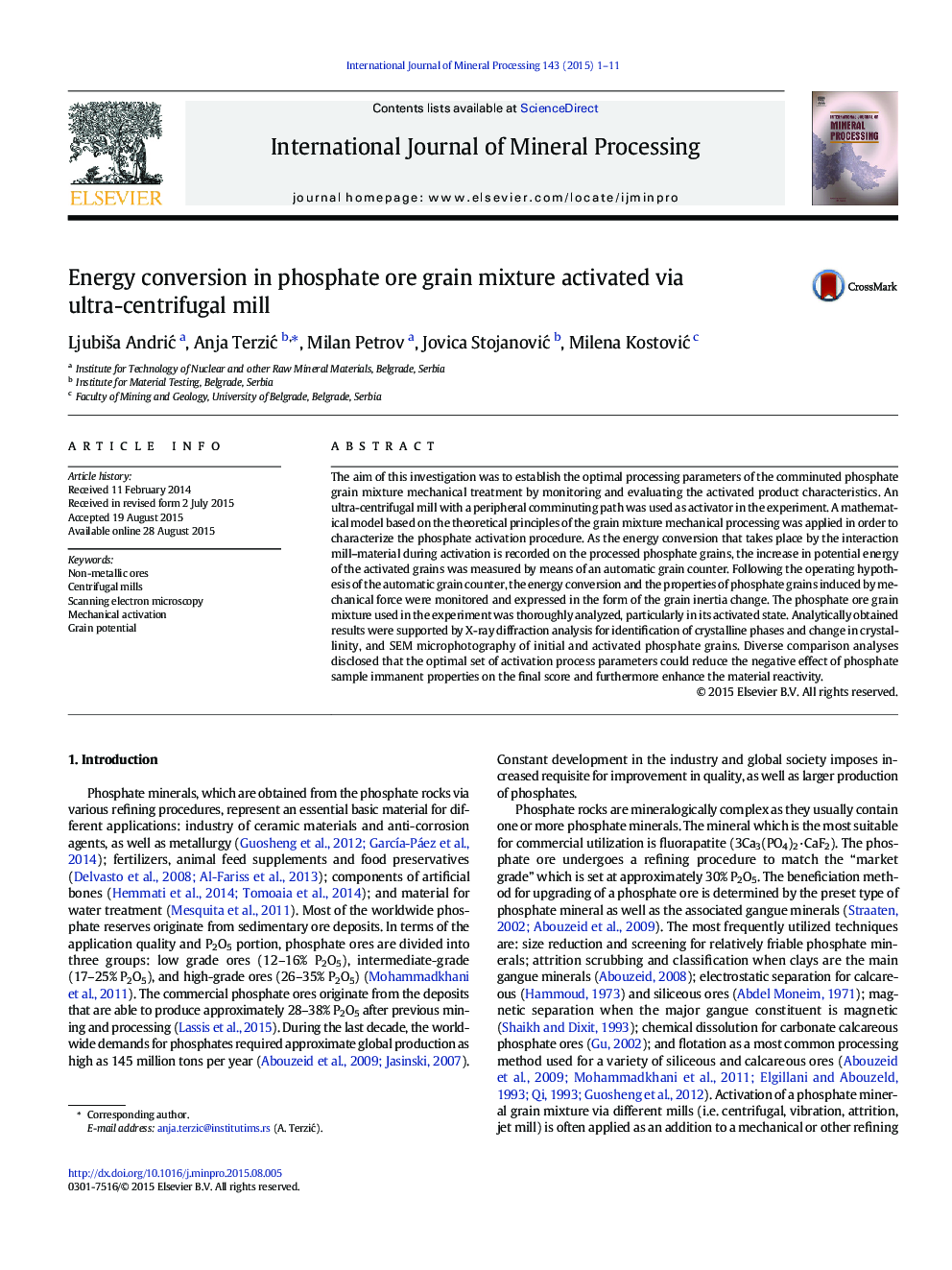| Article ID | Journal | Published Year | Pages | File Type |
|---|---|---|---|---|
| 213751 | International Journal of Mineral Processing | 2015 | 11 Pages |
•Energetically optimal grinding period for phosphate ore is 60 min.•Activation in ultra-centrifugal mill reduces grain diameter 5 times.•Grain inertia change represents grain properties induced by mechanical force.•Change of grain inertia and mass depends on grinding duration.•Grains were positively charged but with smaller mass after grinding.
The aim of this investigation was to establish the optimal processing parameters of the comminuted phosphate grain mixture mechanical treatment by monitoring and evaluating the activated product characteristics. An ultra-centrifugal mill with a peripheral comminuting path was used as activator in the experiment. A mathematical model based on the theoretical principles of the grain mixture mechanical processing was applied in order to characterize the phosphate activation procedure. As the energy conversion that takes place by the interaction mill–material during activation is recorded on the processed phosphate grains, the increase in potential energy of the activated grains was measured by means of an automatic grain counter. Following the operating hypothesis of the automatic grain counter, the energy conversion and the properties of phosphate grains induced by mechanical force were monitored and expressed in the form of the grain inertia change. The phosphate ore grain mixture used in the experiment was thoroughly analyzed, particularly in its activated state. Analytically obtained results were supported by X-ray diffraction analysis for identification of crystalline phases and change in crystallinity, and SEM microphotography of initial and activated phosphate grains. Diverse comparison analyses disclosed that the optimal set of activation process parameters could reduce the negative effect of phosphate sample immanent properties on the final score and furthermore enhance the material reactivity.
